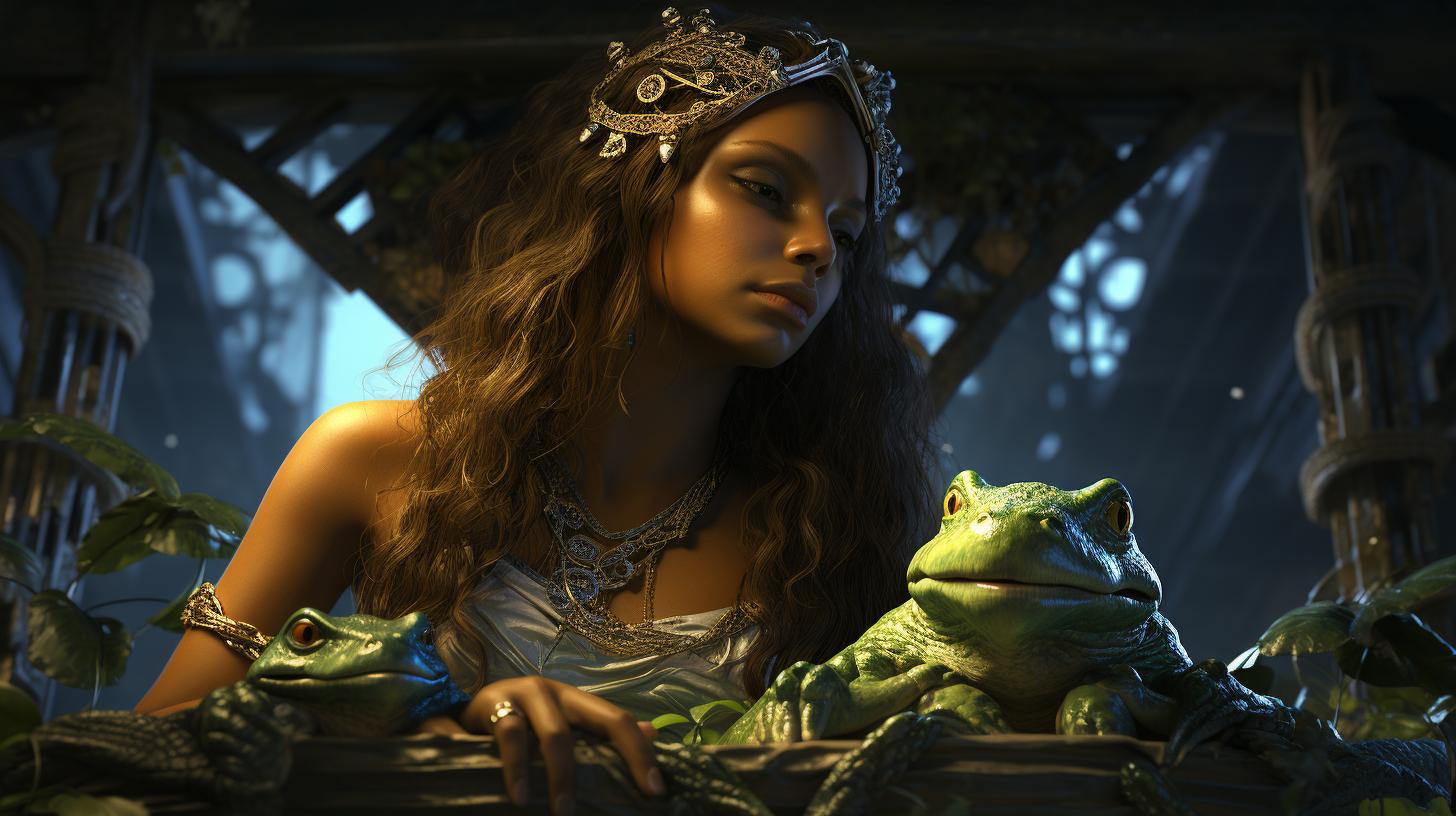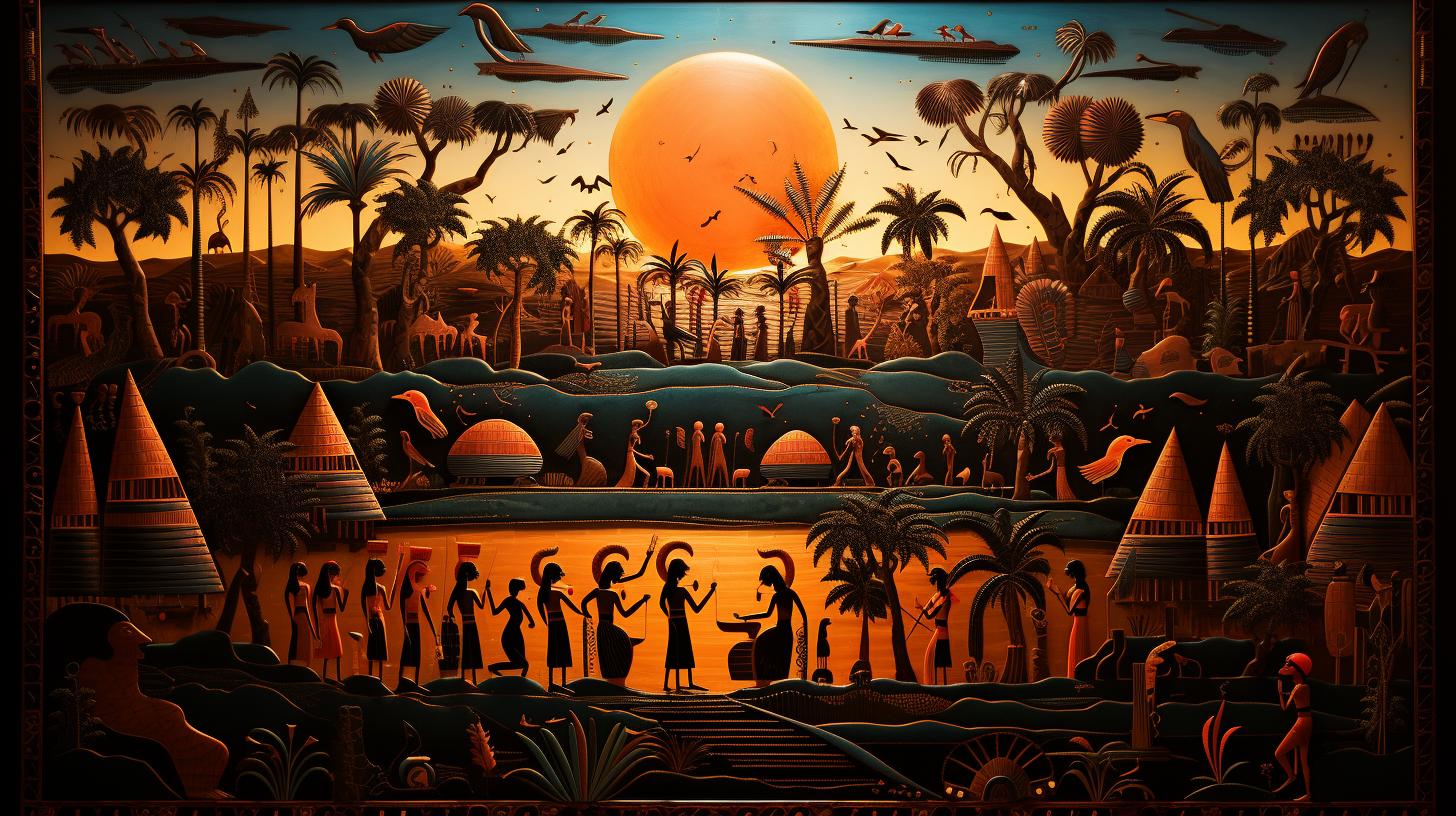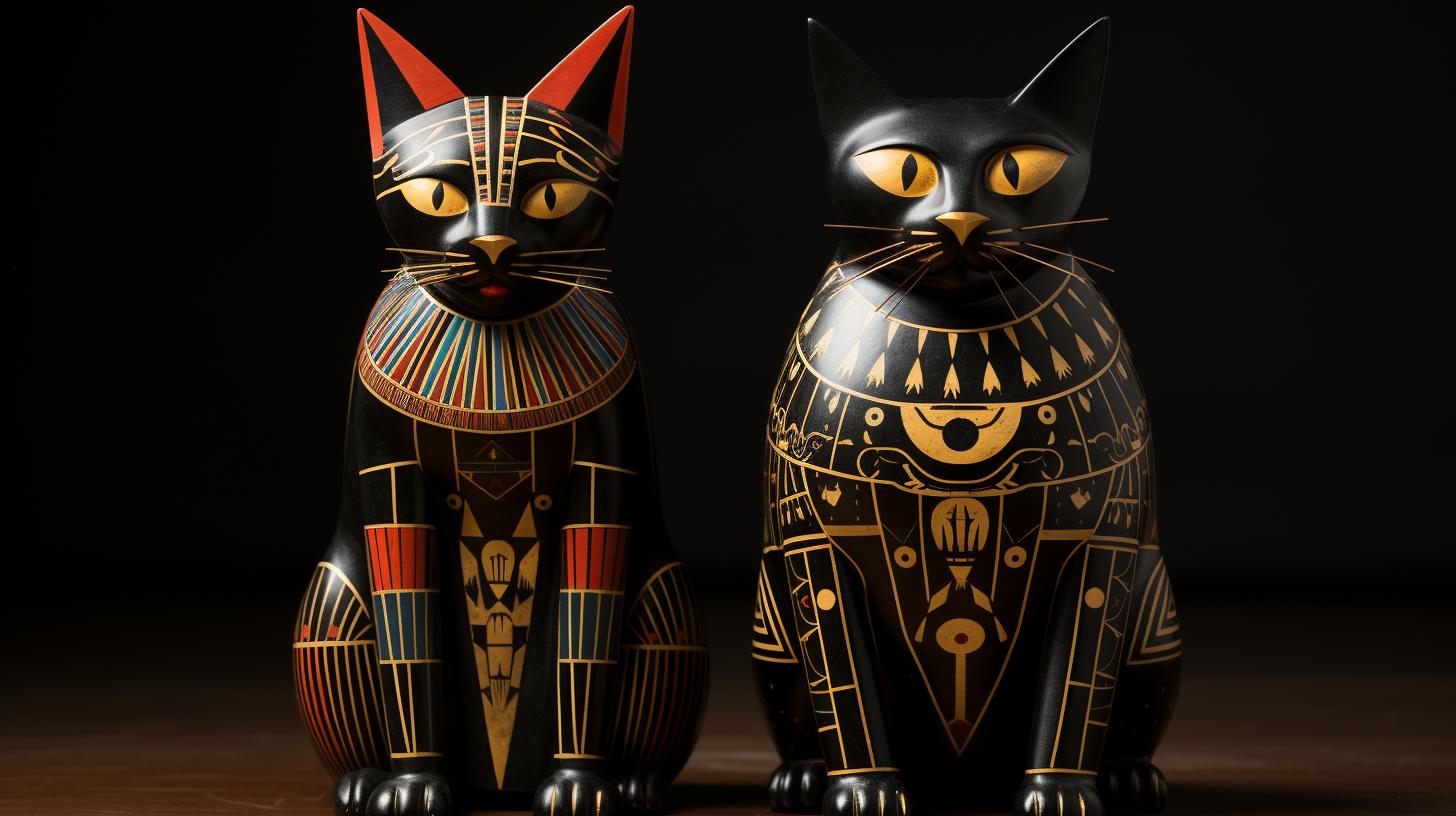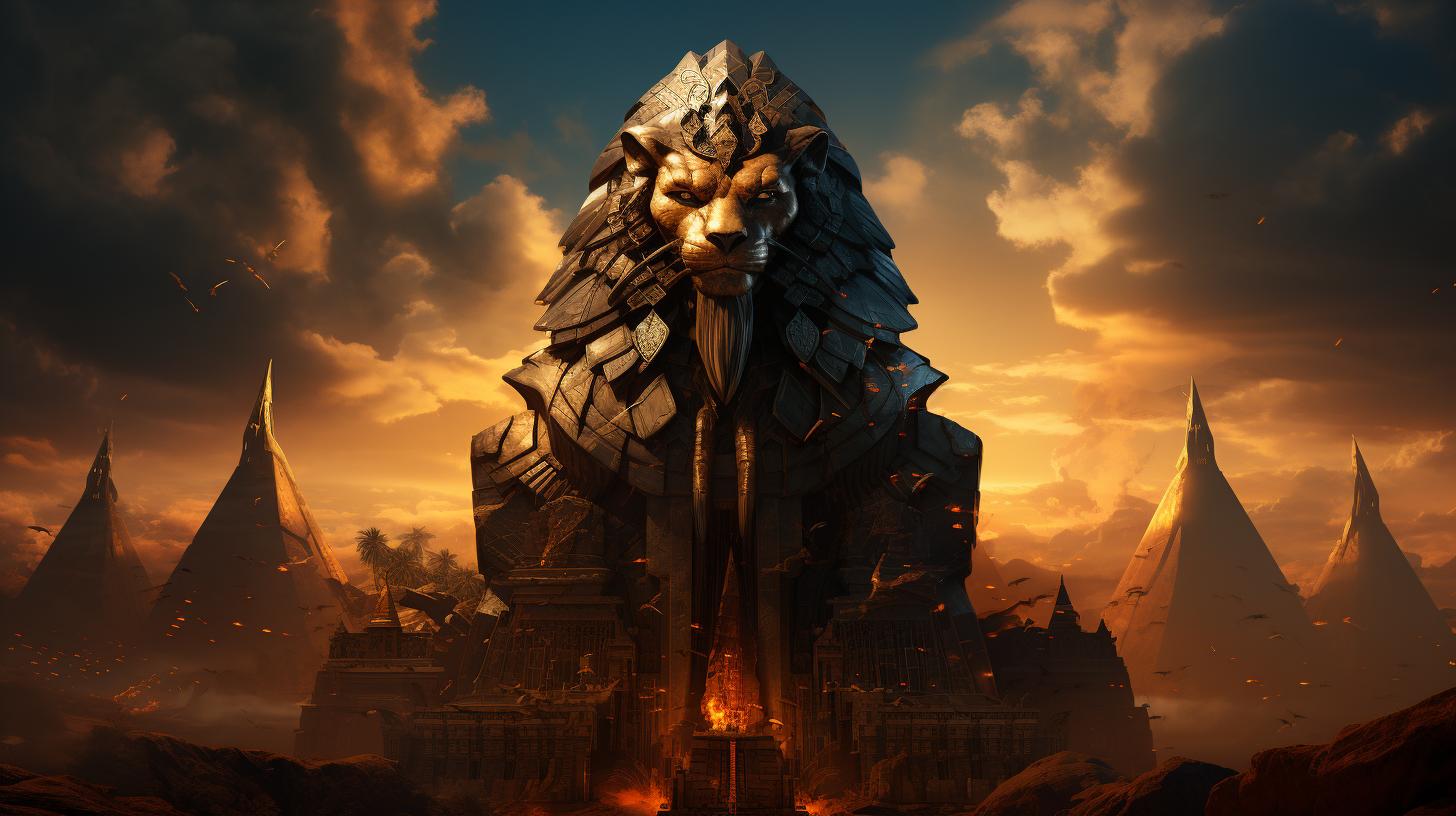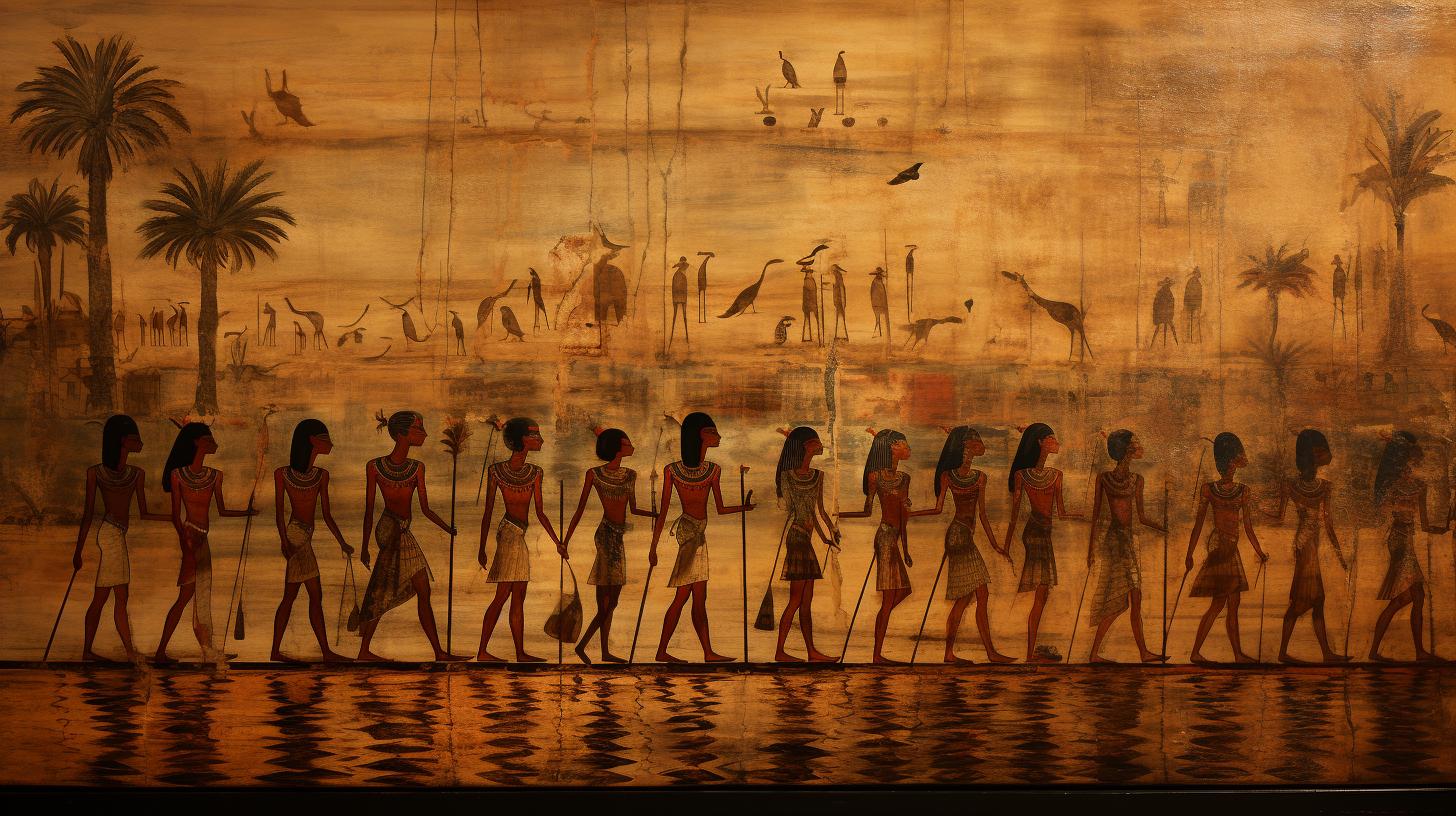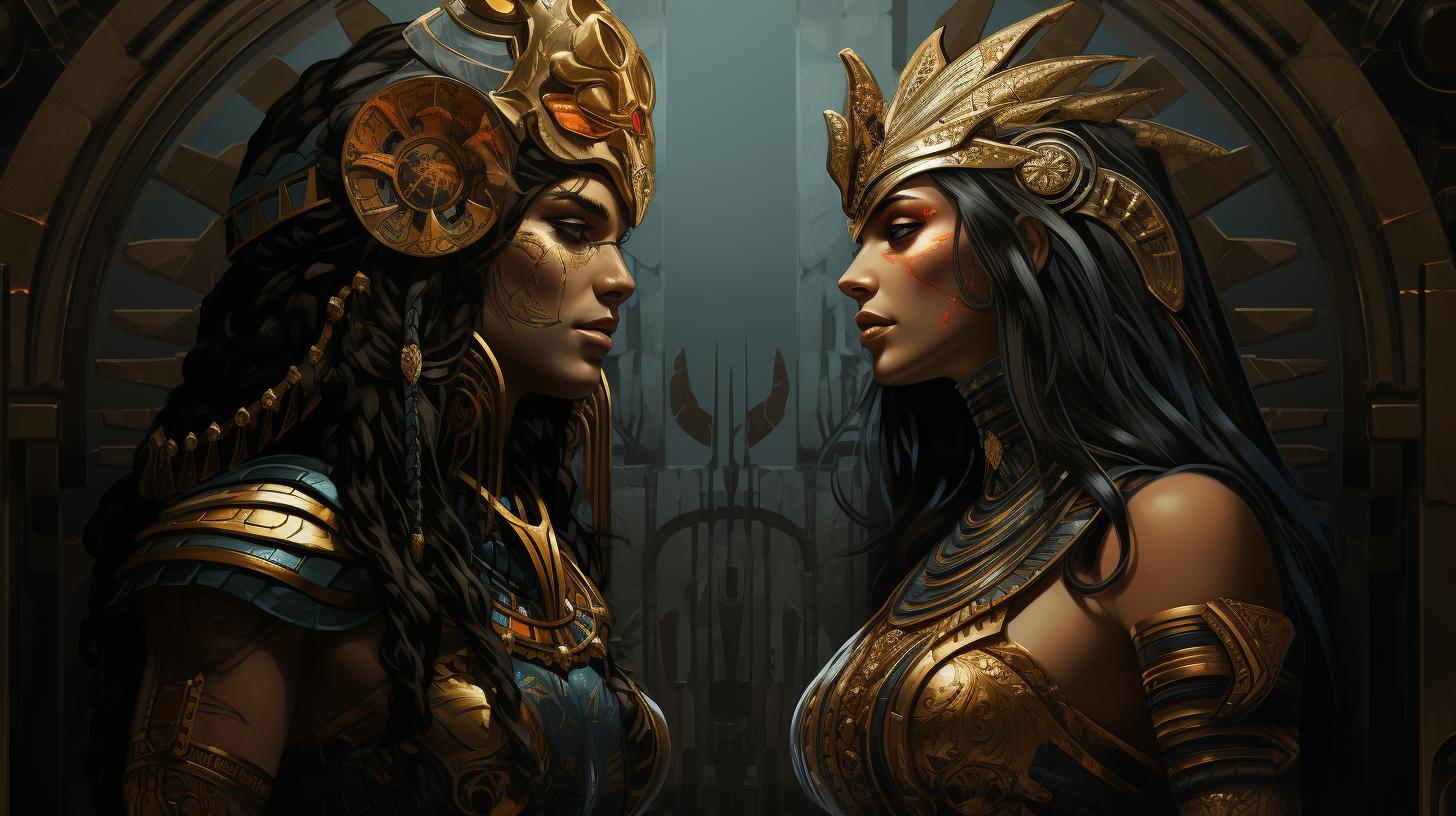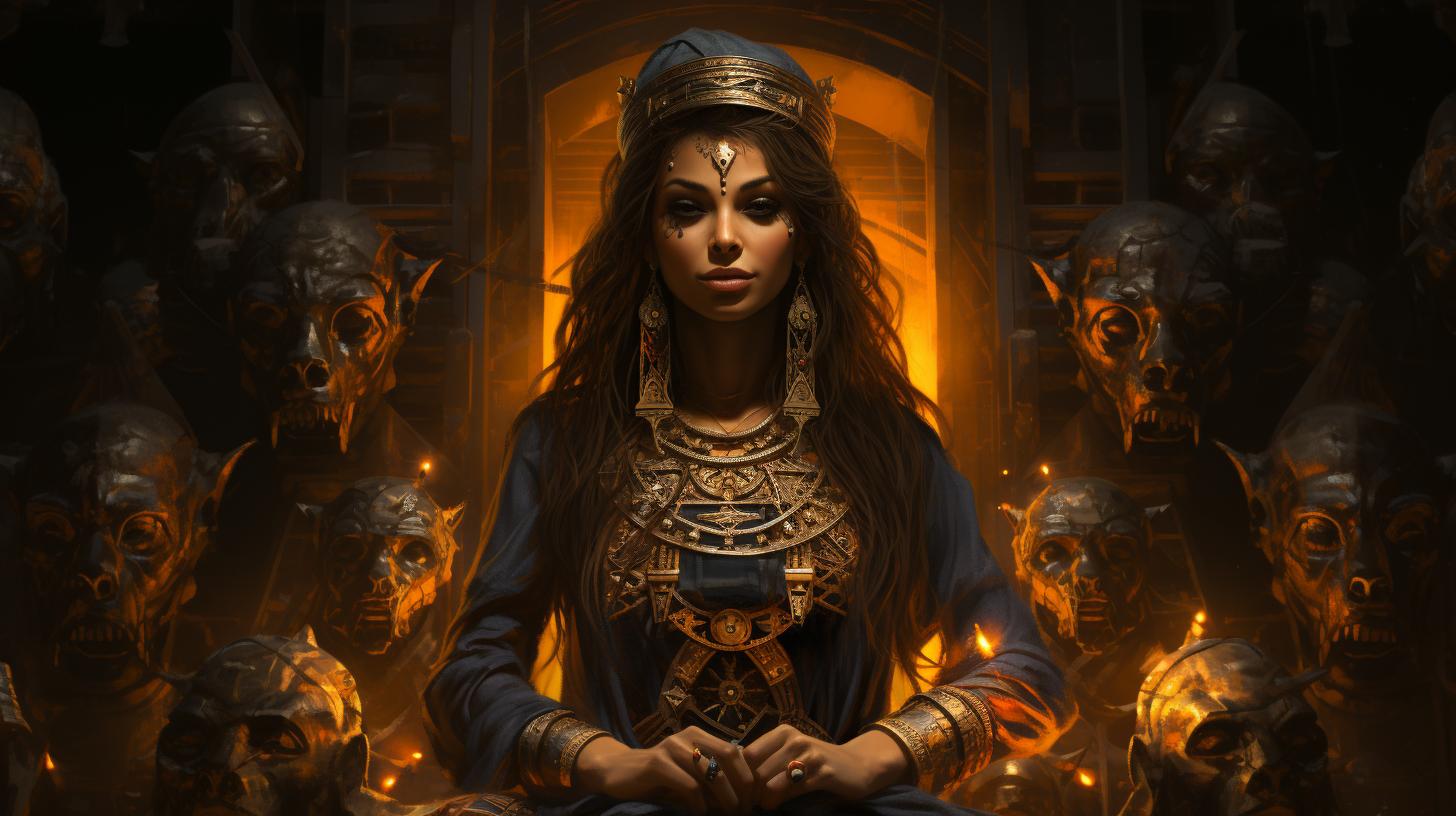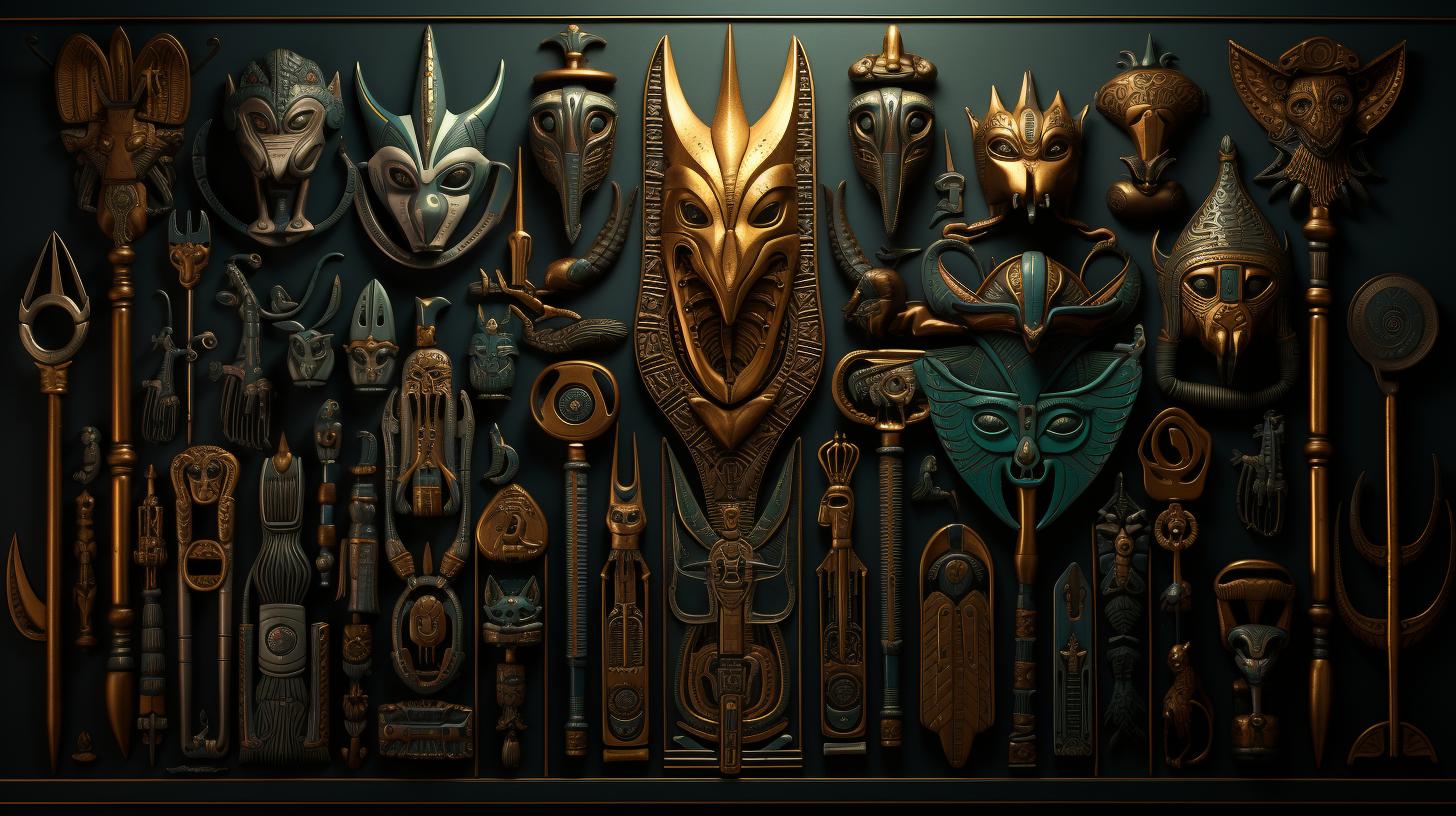Egyptian Goddess Heqet: The Divine Patroness of Fertility and Birth in Ancient Egypt
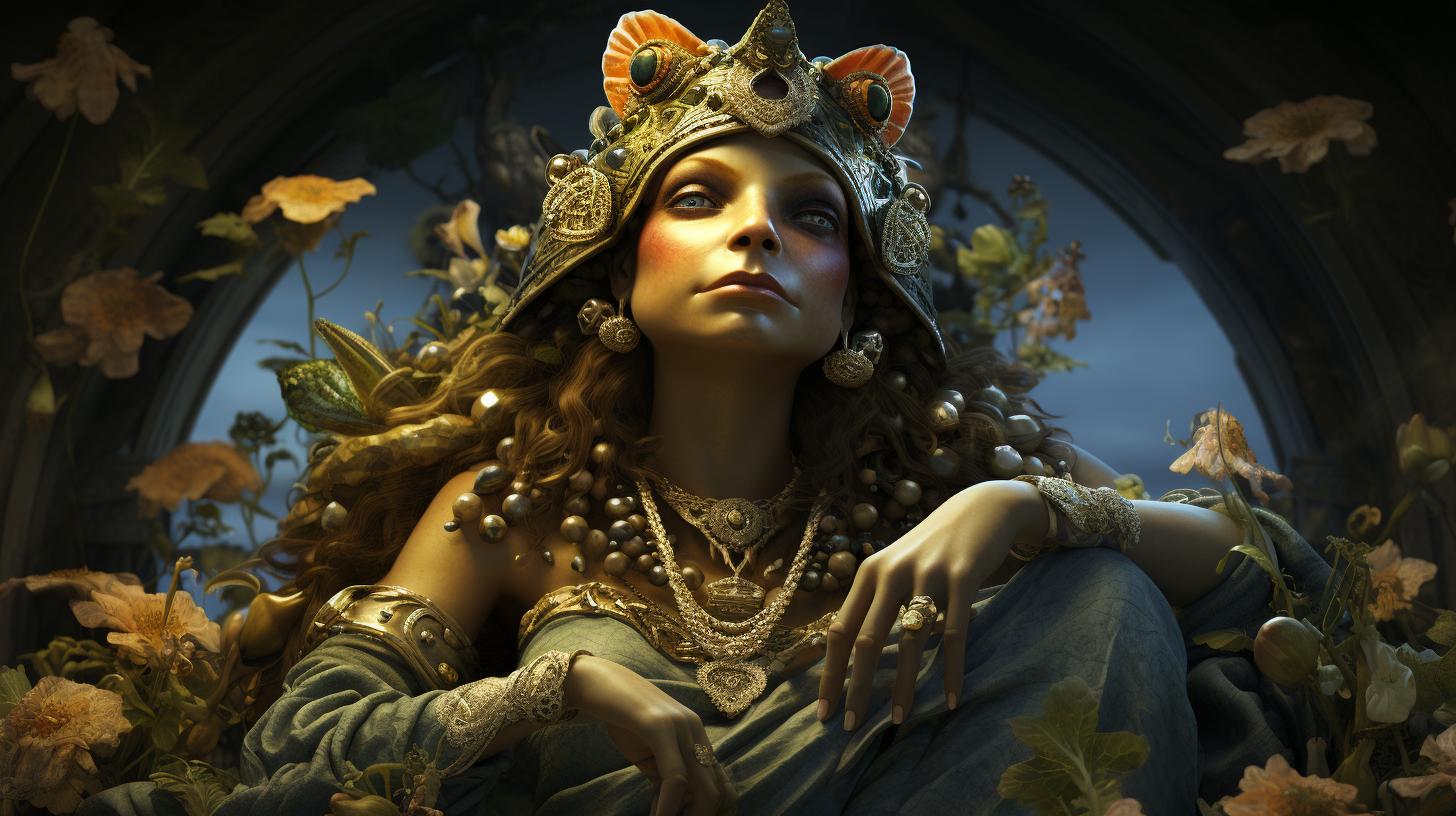
Egyptian goddess Heqet played a prominent role in ancient Egyptian mythology and religious practices. As a deity associated with fertility and birth, she was believed to be instrumental in the renaissance of Osiris and even played a part in the mummification process.
Through her iconography, particularly with the frog symbol, Heqet symbolized the beginning of life and the creation of the world. Her influence extended to pregnancy and childbirth, and her worship was observed in temples dedicated to her.
Heqet’s significance also extended to the afterlife, where she was believed to assist the deceased. Her legacy can still be seen in ancient Egyptian art and texts.
Who Is Heqet in Egyptian Mythology?
In the fascinating world of ancient Egyptian mythology, Heqet occupies a prominent position as a significant deity.
Let’s delve into the multifaceted nature of this ancient Egyptian goddess, exploring her role in their religious practices and the symbolism attached to her.
The Role of Heqet in Ancient Egyptian Religion
Heqet held a vital role in the complex and ritualistic ancient Egyptian religion. As the goddess of birth, fertility, and creation, she played a crucial part in the mythological narrative of the rebirth of Osiris. With her association with the process of mummification, Heqet was regarded as an influential figure during the final stages of life and symbolized the cycle of life, death, and resurrection.
Heqet’s Iconography and Symbolism
To represent the essence of Heqet, ancient Egyptians depicted her with the head of a frog. This unique iconography symbolized her association with fertility and the annual inundation of the Nile, where frogs emerged abundantly.
Considered the wife of Khnum, the creator god, Heqet was believed to breathe life into the clay figures made by Khnum, giving them existence and vitality.
The frog symbolism associated with Heqet further embodied notions of prosperity, rebirth, and the beginning of life. The presence of frogs during the flooding of the Nile connected them with the concept of fertility and the start of a new agricultural cycle, emphasizing Heqet’s significance in the creation and sustenance of life in ancient Egypt.
- Significance of frog symbolism in ancient Egyptian culture
- Relation between frog symbolism and fertility
- Role of frogs in the annual inundation of the Nile
These subtopics shed light on the broader significance of Heqet’s iconography and symbolism, which permeated the religious and cultural fabric of ancient Egyptian society.
The Connection Between Heqet and Fertility
The goddess Heqet played a pivotal role in ancient Egyptian mythology, particularly in relation to fertility and birth. Through her association with these concepts, she garnered immense reverence in the religious practices of the time.
Let’s explore two key aspects of Heqet’s connection to fertility:
Heqet as the Goddess of Birth and Life
Heqet held a prominent position as the goddess of birth and life. Ancient Egyptians believed that she directly influenced the process of childbirth. As expectant mothers approached the final stages of labor, they often turned to Heqet for assistance and protection.
Her divine presence was thought to ensure the successful delivery of new life into the world. Alongside her role in birth, Heqet was also associated with the creation and sustenance of life, highlighting her significance in the cycle of existence.
The Relationship Between Heqet and the Frog Symbolism
An intriguing aspect of Heqet’s fertility association lies in her strong connection to the symbolism of frogs. Frogs were believed to represent fertility and abundance due to their appearance in large numbers during the annual Nile flood.
This natural occurrence was seen as a sign of new life and the rejuvenation of the land. Heqet’s depiction with the head of a frog further emphasized her connection to this symbolism.
The ancient Egyptians believed that the presence of frogs signified her divine presence and her ability to bring about fertility and prosperity to the people.
In essence, Heqet’s role as the goddess of birth and life, coupled with her association with the symbolism of frogs, solidifies her significance in the realm of fertility in ancient Egyptian culture.
Her presence and influence were deeply intertwined with the cycles of creation, birth, and the abundance of life itself.
Heqet’s Involvement in the Osiris Myth
Heqet, the Egyptian goddess with a frog’s head, played a significant role in the myth of Osiris, the ancient Egyptian god of the afterlife and rebirth. She was intimately connected to the resurrection of Osiris, symbolizing the transformative power of life and death.
Heqet’s Role in the Resurrection of Osiris
Heqet’s involvement in the resurrection of Osiris was crucial. According to mythology, after Osiris was killed by his brother Seth, his body was dismembered and scattered. It was through the intervention of Heqet that Osiris was able to be resurrected and become the ruler of the Egyptian underworld.
Heqet’s role in this process was to assist in reassembling and revitalizing Osiris’ body. She used her divine powers of fertility and creation to breathe life back into him, symbolizing the cyclical nature of life, death, and rebirth.
This association with resurrection and renewal made Heqet an essential figure in Egyptian religious rituals and beliefs surrounding the afterlife. Her presence ensured the continuity of life beyond death and the promise of eternal existence.
Heqet’s Presence in the Mummification Process
Additionally, Heqet was believed to have a presence in the complex process of mummification. Mummification was a meticulous and sacred process undertaken to preserve the deceased’s body for the afterlife. Heqet’s association with birth and creation made her an appropriate figure to aid in this undertaking.
Scholars suggest that Heqet played a role in the purification rituals of the deceased’s body before mummification. Her presence ensured a smooth transition from physical life to the spiritual realm, guaranteeing the deceased’s resurrection and eternal existence in the afterlife.
- Heqet symbolized the transformative power of life and death.
- She assisted in reassembling and revitalizing Osiris’ body during his resurrection.
- Heqet’s divine powers of fertility and creation breathed life back into Osiris.
- She played a vital role in the complex process of mummification, ensuring the deceased’s smooth transition to the afterlife.
Heqet’s involvement in the myths of Osiris and the mummification process solidified her importance in ancient Egyptian religious beliefs and practices.
She embodied the concept of rejuvenation and the eternal cycle of life, making her revered among the Egyptian pantheon of gods and goddesses.
The Worship and Cult of Heqet
Heqet, the ancient Egyptian goddess of fertility and birth, had a significant following in the religious practices of the time. Her worship involved various practices and rites that were dedicated to honoring her divine presence.
The ancient Egyptians believed that by paying homage to Heqet, they could ensure the successful completion of the reproductive cycle and the continuation of life.
The Practices and Rites Associated with Heqet’s Worship
Heqet’s worshippers engaged in a range of rituals to demonstrate their devotion to the goddess.
These practices were aimed at seeking her favor and blessings for fertility, safe childbirth, and the general prosperity of their communities.
- Offerings and Prayers: Worshippers would bring offerings to Heqet in the form of food, flowers, and incense.
They believed that such gestures would please the goddess and elicit her favorable attention.
- Ceremonial Dances and Music: The worship of Heqet often involved lively dances and music, which were believed to invoke her presence and blessings.
These rhythmic movements were performed by both priests and devotees with great enthusiasm.
- Ritual Purification: Before engaging in worship, individuals would purify themselves through bathing and the use of cleansing rituals.
This act of purification was intended to ensure spiritual cleanliness and connection with the divine.
The Role of Heqet in Ancient Egyptian Temples
Ancient Egyptian temples dedicated to Heqet served as focal points for worship and religious activities. These sacred spaces were intricately designed and adorned with artworks depicting the goddess, emphasizing her vital role in the religious fabric of Egyptian society.
- Priesthood and Ceremony: Within these temples, devoted priests and priestesses served as intermediaries between the worshippers and Heqet. They conducted elaborate ceremonies, performed sacred rituals, and offered prayers on behalf of the community.
- Pilgrimage and Festivals: Heqet’s temples attracted devout followers who undertook pilgrimages to seek her blessings.
Festivals dedicated to the goddess were held, featuring processions, music, and offerings to honor her divine presence.
- Sacrificial Offerings: In some instances, animal sacrifices were made as offerings to appease Heqet and gain her favor.
These sacrifices were conducted with reverence and aimed to ensure the fertility of the land and the prosperity of the community.
The worship and cult of Heqet played a crucial role in ancient Egyptian society, with individuals seeking her blessings for fertility and childbirth.
The practices and rites associated with her worship, as well as the grandeur of her temples, reflected her position as a revered goddess. Her influence on fertility rituals and the importance placed on her role in the divine cosmic order are remarkable aspects of ancient Egyptian religious beliefs and practices.
Heqet’s Influence on Pregnancy and Childbirth
The Egyptian goddess Heqet played a significant role in the beliefs and customs surrounding pregnancy and childbirth in ancient Egypt. Her association with fertility and birth made her a central figure in the lives of expectant mothers and the birthing process.
Let’s explore the fascinating aspects of Heqet’s influence in this crucial stage of life.
The Beliefs and Customs Surrounding Heqet and Pregnancy
Heqet was revered as a guardian and protector of pregnant women. According to ancient Egyptian beliefs, invoking her favor ensured a safe and successful pregnancy. Women would often wear amulets or talismans adorned with Heqet’s image to seek her blessings and safeguard their unborn children.
During pregnancy, rituals and offerings were dedicated to Heqet to ensure a smooth delivery. Expectant mothers would visit temples dedicated to her, seeking her divine intervention and guidance. It was believed that Heqet would assist in maintaining the well-being of both mother and child throughout the pregnancy and ward off any potential complications.
Women also sought the expertise of midwives trained in the ways of Heqet, known as “Servants of Heqet.” These skilled midwives would perform rituals and prayers centered around the goddess during pregnancy, placing a strong emphasis on the importance of Heqet’s presence and protection during this transformative period.
The Role of Heqet in Assisting in the Birthing Process
Heqet’s influence extended beyond pregnancy and into the birthing process itself. It was believed that she guided and aided women during labor, ensuring a successful delivery and the safe arrival of the newborn.
Midwives trained in Heqet’s practices would invoke her name and symbols during the stages of labor. They would often hold amulets with Heqet’s image or her sacred symbol, the ankh, to provide spiritual support and encouragement to the laboring mother.
The presence of Heqet symbolized the granting of life and the continuation of the cycle of creation. Her guiding influence gave expectant mothers strength and hope, as they believed she played an active role in the birthing process.
Through her association with fertility and birth, Heqet left an indelible mark on the ancient Egyptian understanding of pregnancy and childbirth. Her symbolism and rituals provided comfort and reassurance to women and reflected the significance of this transformative phase in their lives.
Heqet’s Significance in the Afterlife
Heqet, the Egyptian goddess associated with fertility and birth, also held great significance in the afterlife beliefs of ancient Egyptians. Her presence could be observed in various funerary practices and rituals, illustrating her role in guiding the deceased to the realm of the dead.
Heqet’s Presence in Funerary Practices and Rituals
In the funerary context, Heqet played a vital role in ensuring a successful transition to the afterlife. Egyptians believed that she assisted in the rebirth and transformation of the deceased into their new existence.
Her influence was evident in multiple funeral rituals and ceremonies.
One such ritual was the Opening of the Mouth ceremony, where priests would touch the mouth and eyes of the deceased to restore their senses and allow them to partake in the afterlife.
Heqet was invoked during this ritual as a guardian and guide for the deceased.
Another important funerary practice associated with Heqet was the placement of her image beneath the funeral bier of Osiris, the god of the underworld.
This symbolized her role in facilitating the journey from the mortal world to the realm of the dead.
The Use of Heqet Amulets for Protection and Assistance
A notable aspect of Heqet’s significance in the afterlife was the use of amulets depicting her image as a source of protection and assistance for the deceased. These amulets, often worn by the deceased or placed within their burial wrappings, were believed to ensure a safe passage into the afterlife and guard against malevolent forces.
In addition to her role in afterlife protection, Heqet’s amulets were also believed to provide assistance and guidance to the deceased in navigating the complex journey through the underworld. They were thought to bestow blessings and favorable conditions upon the individual, aiding their transition and ultimate rebirth.
- Amulets featuring Heqet often depicted her holding the ankh, the symbol of life, which represented the eternal nature of existence beyond death.
- These protective amulets were considered essential for ensuring a successful afterlife journey and were commonly placed in the tombs of the deceased.
- The belief in Heqet’s ability to safeguard the deceased extended to the mortal realm as well, as pregnant women often wore amulets with her image for protection during childbirth.
Heqet’s association with protection, guidance, and assistance in the afterlife illustrates her integral role in ancient Egyptian beliefs and practices surrounding death and the journey to the realm of the dead.
The Legacy of Heqet in Ancient Egyptian Culture
The influence of the Egyptian goddess Heqet can be seen across various aspects of ancient Egyptian culture, including art, architecture, texts, and history. Her significance resonates through the ages, leaving a lasting impact on the civilization.
Heqet’s Influence on Art and Architecture
Heqet’s unique depiction as a goddess with the head of a frog inspired numerous artistic creations in ancient Egypt. Artists portrayed her in reliefs, statues, and hieroglyphs, showcasing her association with fertility and birth.
The motifs and symbols associated with Heqet were incorporated into temple designs and sacred structures, symbolizing the importance of her role in the Egyptian pantheon.
Examples of Heqet’s Influence
- Reliefs depicting Heqet holding the ankh, the symbol of life, were commonly found in temples and tombs.
- Architectural elements, such as frog-shaped sculptures and carvings, were utilized in the construction of sacred buildings and shrines dedicated to Heqet.
- Heqet’s image was often featured on amulets worn by both the living and the deceased, serving as a symbol of protection and divine intervention.
Heqet’s Enduring Presence in Ancient Egyptian Texts and History
Ancient Egyptian texts and historical records provide valuable insights into the enduring presence of Heqet in their society.
Her name is mentioned in various religious inscriptions, spells, and narratives, emphasizing her role in creation, fertility, and the afterlife.
References to Heqet in Ancient Texts and History
- Religious hymns and prayers dedicated to Heqet reveal the reverence and devotion accorded to her by the ancient Egyptians.
- Her presence is often intertwined with the myths and legends surrounding important deities such as Osiris, emphasizing her role in the cycle of life, death, and resurrection.
- Historical accounts document the existence of temples dedicated to Heqet, such as those in Qus and Her-wer, although only architectural remnants remain today.
Together, the artistic representations and textual references of Heqet provide a comprehensive understanding of her cultural impact in ancient Egyptian society.
Her legacy continues to fascinate and inspire scholars and enthusiasts alike, serving as a testament to the profound influence she held over the beliefs and practices of the time.
.

